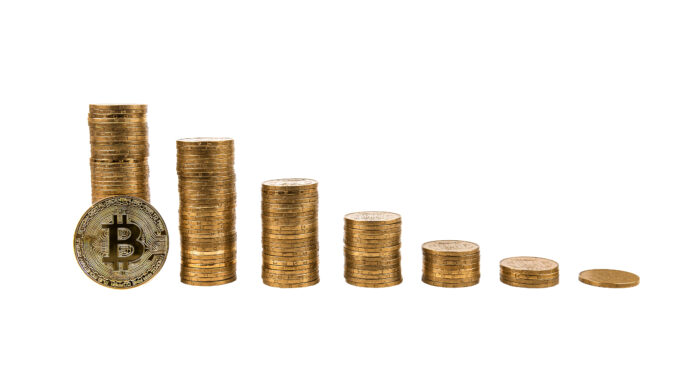Bitcoin mining is the process of creating new Bitcoin by verifying transactions and adding them to the blockchain. Miners are rewarded for their work with new Bitcoin, as well as transaction fees. In this article, we will explore the rewards for Bitcoin miners, including the block reward and transaction fees.
Block Reward
The block reward is the primary reward for Bitcoin miners. When a miner successfully verifies a block of transactions, they are rewarded with new Bitcoin. The current block reward is 6.25 Bitcoin per block, and it is halved approximately every four years.
When Bitcoin was first introduced, the block reward was 50 Bitcoin per block. The first halving occurred in November 2012, reducing the block reward to 25 Bitcoin per block. The second halving occurred in July 2016, reducing the block reward to 12.5 Bitcoin per block. The most recent halving occurred in May 2020, reducing the block reward to its current level of 6.25 Bitcoin per block.
The halving of the block reward is designed to slow down the rate at which new Bitcoin is created, reducing the overall supply and increasing its value. The halving also increases the difficulty of mining, as miners receive fewer rewards for their work.
Transaction Fees
In addition to the block reward, miners also earn transaction fees. When a transaction is made on the Bitcoin network, the sender can choose to include a transaction fee. This fee is paid to the miner who verifies the transaction.
Transaction fees are optional, but they can incentivize miners to verify transactions more quickly. If there are many transactions waiting to be verified, miners may choose to verify transactions with higher fees first, as they will earn more Bitcoin for their work.
Transaction fees vary depending on the size of the transaction and the current demand for block space. During times of high demand, transaction fees can increase significantly, as users compete to have their transactions verified more quickly.
Calculating Mining Rewards
The amount of Bitcoin that miners can earn from mining depends on several factors, including the price of Bitcoin, the difficulty of mining, and the cost of electricity.
To calculate mining rewards, miners need to consider the current block reward, transaction fees, and their mining costs. Miners who use more efficient hardware or who have access to cheap electricity may be able to earn more Bitcoin than miners who use less efficient hardware or who have to pay higher electricity costs.
It’s important to note that mining rewards can fluctuate depending on market conditions. If the price of Bitcoin drops significantly, mining may not be profitable, even if the block reward and transaction fees remain constant.
Conclusion
Bitcoin miners are rewarded for their work with new Bitcoin and transaction fees. The block reward is the primary reward for miners, and it is halved approximately every four years to slow down the rate at which new Bitcoin is created.
Transaction fees are optional, but they can incentivize miners to verify transactions more quickly. Transaction fees vary depending on the size of the transaction and the current demand for block space.
Mining rewards depend on several factors, including the price of Bitcoin, the difficulty of mining, and the cost of electricity. To calculate mining rewards, miners need to consider these factors and determine how much Bitcoin they can expect to earn from their mining operation.



















